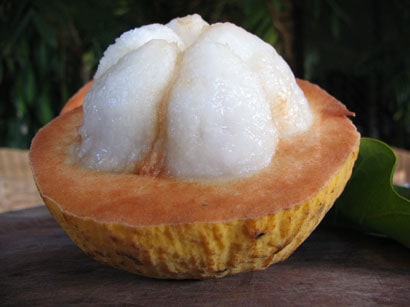The longan is a brown skinned fruit that is said to be the “little brother” of the lychee. It is native to China and South East Asia and is a little larger than an olive. The longan has a musky, grape flavor and is sweeter than a lychee but not as juicy. The longan has a whitish, translucent flesh that encases a small black seed, and its skin is pale brown and brittle.
The longan or lungan is sometimes referred to as adragon’s eye or eyeball in China and as mamoncillo chino in Cuba. It is the seed at the center of the fruit that gave it the “eyeball” name. The seed is jet black and shiny with a circular white spot at its base, giving it the appearance of an eyeball. In China, the longan is used more often in traditional medicine than as an edible fruit.
Health Benefits of Longan
Longan is used as remedy for stomach ache, insomnia, amnesia, and dropsy.
– The fruit is said to invigorate the heart and spleen, nourish the blood and have a calming effect on the nervous system.
– A spoonful of longan tonic made of equal quantities of longan flesh and sugar simmered in water till it is reduced to a syrup consistency is recommended twice a day.
– A decoction of the dried flesh is taken as a tonic and treatment for insomnia and neurasthenic neurosis.
– In Vietnam, the “eye” of the longan seed is pressed against snakebite in the belief that it will absorb the venom.
– The seeds are administered to counteract heavy sweating, the pulverized kernel, which contains saponin, tannin and fat, serves as a styptic (substance that draws together or constricts body tissues and is effective in stopping the flow of blood or other secretions).


